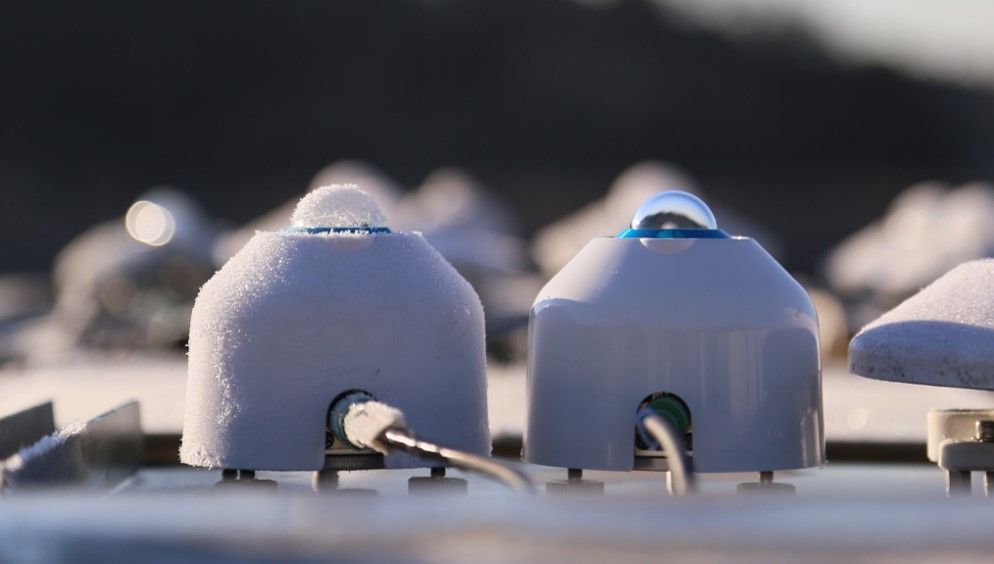
EKO Instruments Pyranometer Patent
In 2016, we, EKO Instruments Co, Ltd., developed and announced the MS-80 series Class A Pyranometers, a new-concept product that redefined the conventional standard of thermopile-type pyranometers.
As renewable energy continues to grow worldwide, solar power is becoming one of the fastest-expanding sources of clean electricity. At the heart of this growth is the need to measure solar irradiance—the sunlight energy that powers photovoltaic (PV) cells. Accurate measurement of solar irradiance is essential: it helps developers assess the potential of new solar power plants and ensures reliable monitoring of power generation once the systems are installed.
Traditionally, high-end thermopile pyranometers have been designed with a black-coated sensor surface and a protective double-glass dome. Today, however, the market demands solutions that deliver greater accuracy in solar irradiance measurements while remaining cost-effective. Meeting these expectations requires a breakthrough of technological innovation—one that balances precision, reliability, and affordability to support the continued growth of solar energy worldwide.
In response to these market demands, EKO developed the award-winning MS-80 series pyranometers, incorporating the latest thermopile technology and an advanced diffuser plate design. This innovation delivers higher measurement accuracy, enhanced long-term stability, and greater efficiency in both operation and productivity.
Since the launch of the MS-80 in 2016, EKO has continued to expand and refine the series. In 2020, the MS-80S was introduced, offering multiple signal outputs and remote diagnostic capabilities. This was followed in 2022 by the MS-80SH, which added a heating function to mitigate dew and frost, further enhancing reliability in challenging environments.
From the outset, EKO has been committed to advancing solar irradiance measurement through continuous improvements in accuracy, functionality, and productivity, enabled by its revolutionary optical design. Today, the MS-80 series is widely adopted across diverse applications, including utility-scale solar PV power plants, meteorological and climatological research, automotive testing, and building environmental studies (architecture) etc.
Furthermore, the combination of a diffuser and a thermopile adopted in the pyranometer is EKO’s proprietary technology, and the MS-80 series has obtained patents in certain countries.
*Patent number for reference E0126AOP0001 (Japan: Patent No. 7160429; Europe: EP3324159A; U.S.: US 11,821,786 B1; China: ZL 2022 8 0004577.2).
EKO's Patent & Technologies
Faster, Smarter, More Accurate: How EKO’s Innovation is Transforming Solar Irradiance Measurement

MS-80 series features:
- Fast Response Time
Compared with conventional products, the MS-80S series can now respond in approximately one-tenth the time (0.5 seconds at 95%) to changes in solar irradiance. Because of this, it can track and detect rapid changes in solar irradiance caused by clouds passing. Fast response time led development of MS-80SH plus+ rotating shadow-band solar irradiance measurement system. This solution can measure three components of solar irradiance at a reasonable cost without compromising the accuracy. Three components are Diffuse Horizontal Irradiance (DHI), essential for the modeling of solar insolation incoming to the rear side of bifacial PV modules.
- Superior long-term stability
Pyranometers deteriorate with stresses given by environmental factors like temperature, humidity, and UV radiation outdoors due to their purpose of use. A pyranometer’s calibration value(sensitivity) will change because of this deterioration. Thanks to changes in the optical design, the sensor is now less affected by ultraviolet radiation and external environmental factors. This has improved long-term stability, achieving 0.5% over 5 years. In addition, the recommended recalibration interval has been extended to 5 years (compared to 2 years for the previous model), reducing costs associated with recalibration.
- Realization of low zero offsets
Zero offset is a phenomenon in which the output, which should be zero at night when there is no sunlight, is not zero. There are two types of causes: 1) temperature difference between the dome part and the sensor, 2) temperature variation of instruments. Although this is an inevitable error for thermopile-type pyranometers measuring energy converting light to heat, EKO succeeded in reducing these errors dramatically by adopting diffuser plates, new thermopile technology, and miniaturizing the glass dome (MS-80’s zero offsets: ±2W/m2 / International standard ISO9060:2018: ±10W/m2)
- Improved resistance to scratches and damage from external environmental factors
The durability of the dome against scratches caused by sandstorms has been improved thanks to the miniaturization of the glass dome.
- Superior temperature response
Thanks to the internal temperature-compensation circuit board, errors due to temperature changes are minimized, enabling high-precision measurements across a wide temperature range: -10 to +40 ℃: ±0.5%, -20 to +50 ℃: ±0.5%, -40 to +70 ℃: ±2% (80SH).
- Various signal outputs
The sensor provides configurable digital or analog signal outputs to meet system requirements.
- Reduced O&M costs through internal sensors and abnormality alert functions (MS-80S / 80SH)
By monitoring the values of internal temperature, humidity, and tilt sensors inside the pyranometer, sensor malfunctions can be detected at an early stage. Additionally, internal humidity alerts in the event of a sealing failure and heater current alerts in case of anomalies allow operators to detect problems without relying on subjective judgment or experience. (Effective only when using Modbus RTU / SDI-12. Heater alerts are available only on the MS-80SH.)
- Dew and frost mitigation by dome heating function (MS-80SH)
Frost and dew forming on the dome surface can cause significant measurement errors, particularly at the start of solar irradiance measurements in the morning. According to IEC 61724-1:2021, for Class A photovoltaic systems, if frost or dew is expected to affect more than 2% of the annual GHI hours, mitigation measures are required. The MS-80SH, equipped with a dome-heating function to prevent condensation and frost, is an ideal pyranometer in such conditions. The heating function can be turned ON or OFF according to system design requirements.
